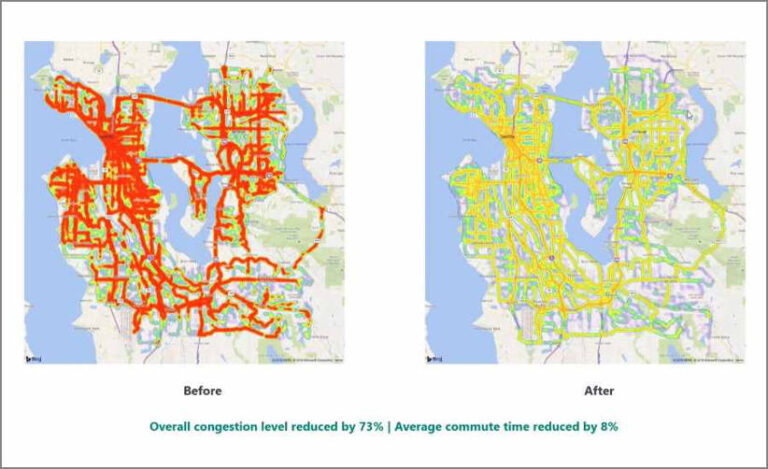This article was originally published on Autonomous Vehicle Technology.
Through a joint research pilot, Ford and Microsoft scientists have simulated thousands of vehicles and their impact on congestion using quantum-inspired technology. Although they are still in the early stages of quantum computing development, the companies say that encouraging progress has been made that can help them take what they’ve learned in the field and start to apply it to problems they want to solve today, while scaling to more complex problems tomorrow.
Julie Love, Senior Director at Microsoft, said, “Quantum computing has the potential to transform the auto industry and the way we move. To do that we need to have a deep understanding of the problems that companies like Ford want to solve, which is why collaborations like these are so important.”
Ford researchers teamed up in 2018 to develop new quantum approaches running on classical computers already available to help reduce Seattle’s traffic congestion. During rush hour driving, numerous drivers request the shortest possible routes at the same time, but current navigation services handle these requests in a vacuum. They do not take into consideration the number of similar incoming requests, including areas where other drivers are all planning to share the same route segments, when delivering results.
Instead of this type of individualized routing, use of a more balanced routing system that considers all route requests from drivers and optimizes route suggestions so the number of vehicles sharing the same roads is minimized could result in saving of time and aggravation by all road users. However, a major roadblock toward balanced routing is that it would require extensive computational resources. Traditional computers are not up to the task, but quantum computing can help.
Attempts to simulate certain features of a quantum computer on non-quantum hardware have led to quantum-inspired technology—algorithms that mimic certain quantum behaviors and run on specialized conventional hardware. That enables organizations to start realizing some benefits before fully scaled quantum hardware becomes available.
With the ability to process vast amounts of data that is not possible today, quantum computing could have the potential to deliver balanced routing to drivers, which could create a series of cascading benefits: smoother flow of traffic, more efficient commutes, and even reduced pollution.
Love noted, “By taking what we’ve learned about quantum computing and bringing it to hardware that’s already available, we don’t have to wait until quantum computers are deployed on a wide scale to take advantage of the technology. Using world-class quantum algorithms customized for specific problems, we can bring measurable improvements and drive change that can impact people’s lives.”
Working with Microsoft, Ford tested several different possibilities, including a scenario involving as many as 5000 vehicles—each with 10 different route choices available to them—simultaneously requesting routes across Metro Seattle. In 20 seconds, balanced routing suggestions were delivered to the vehicles that resulted in a 73% improvement in total congestion when compared to “selfish” routing. The average commuting time, meanwhile, was also reduced by 8%—an annual reduction of more than 55,000 hours saved in congestion across this simulated fleet.
Based on these results, Ford is expanding its partnership with Microsoft to further improve the algorithm and understand its effectiveness in more real-world scenarios: for example, to determine if the method will still deliver similar results when some streets are known to be closed, if route options aren’t equal for all drivers, or if some drivers decide to not follow suggested routes. The companies say that these and other variables will need to be tested to ensure that balanced routing can truly deliver tangible improvements for cities.






